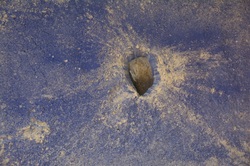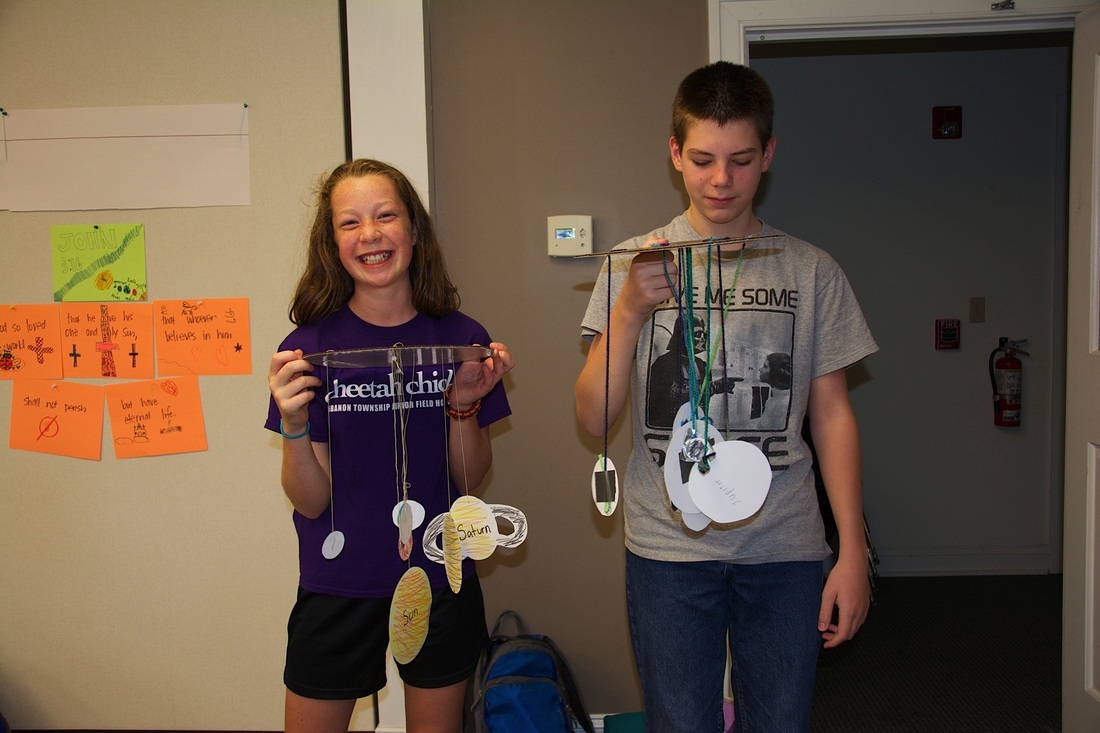|
with Leigh Ann Yoder Brace for Impact!First, a great big THANK YOU! to the students for coming prepared to class each week. Everyone seems to be completing the weekly assignments and returning their library books. It is encouraging to hear the students comment on their weekly library books with one another, and there is always a race to grab the most desired books. We began class with a very brief discussion of Mercury. We narrowed our focus to the large number of craters present on Mercury, and introduced the week's activity.  As a class we performed an Impact Crater Experiment. We tested three different sized meteors (rocks), each dropped from four different heights onto our 'Mercury Like' surface. We added dry powder paint so we could more easily identify the ray lengths produced from the impacts. After collecting data, we calculated averages and made these conclusions: 1. Crater width is only dependent on the size/weight and orientation of the meteor when it impacts the surface. Height of the drop does not increase the crater width. 2. Crater depth is dependent on meteor size/weight and height of the drop. A larger size and higher drop both produce a larger crater depth. 3. Ray lengths are affected by both meteor size/weight and height of drop. Again, larger size and higher drop produce larger rays. Many of our rays could not be measured since they were way beyond our container. From our simple experiment we were able to better imagine an actual meteor hitting a planet and the impact it would have.
Homework Mandatory: Read ECA Chapter 2 Lending Library Book Bring in shoebox (I need just a few more) Optional: ACG Chapter 5 & 6 NB pg 22, 23, 24, 28, 31 Comments are closed.
|
Categories
All
Archives
May 2016
|






 RSS Feed
RSS Feed